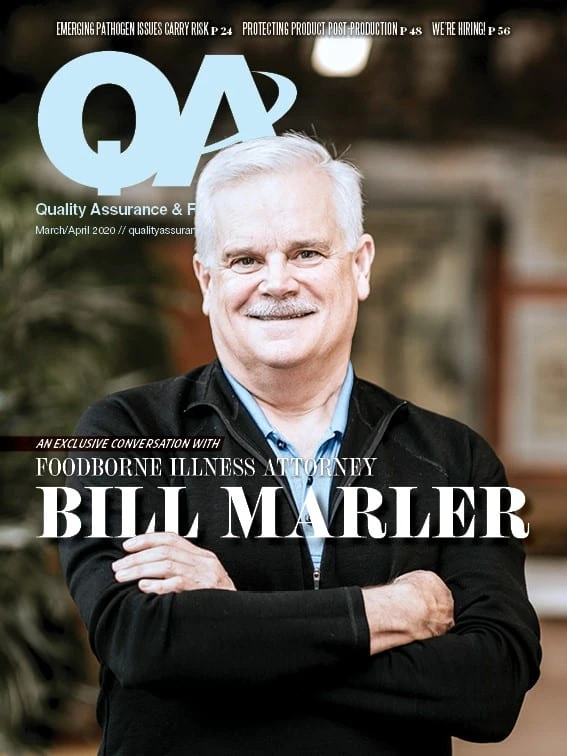I want the life back that I had before food poisoning…
Every year, according to CDC estimates, 48 million Americans — one in six — get sick from contaminated foods or beverages they thought were safe to eat. Some 128,000 wind up hospitalized, and 3,000 die. Additionally, “unspecified agents” cause 38.4 million episodes of foodborne illness in the US each year. In 2006, I became one of those statistics.

In September of 2006, I was a healthy 65-year-old woman, gainfully employed in the fashion industry. I enjoyed working, volunteered extensively with victims of domestic violence, power walked, and shopped in my Southern California city just steps from the Pacific Ocean.
Then I became one of about 30 people sickened by a norovirus-contaminated salad at a work-related banquet.
On the third day after the event, I became severely nauseated with diarrhea and painful abdominal cramping. I had no idea what was wrong, but it was much, much worse than any virus or flu I have ever experienced. The next day I received a call from my assistant saying that there had been a food poisoning outbreak from the event, and a lot of people were in the hospital.
By then I was so sick I couldn’t drive myself to the hospital, so my sister took me. There were already five people from the event there — but even with all that, the doctors continued to ask what made me think I had food poisoning.
And that hospital visit was just the beginning of an ongoing battle with food poisoning that I am still fighting — nearly 14 years later. The virus-contaminated food caused extensive damage to my entire gastrointestinal system. I have had to visit doctors and hospitals countless times, and I was put through numerous tests that were invasive, painful, and humiliating before I was, finally, properly diagnosed. I developed further gastrointestinal issues, and was then diagnosed with post-infectious irritable bowel syndrome (IBS), which became so acute that I could no longer work.
My bloating can be so bad at times that clothes do not fit, and I can never go too far from a bathroom. I also have a Helicobacter pylori (H. pylori) infection that will never go away; I drink only bottled water except in my own home; I am on the fermentable oligo-, di-, mono-saccharides and polyols (FODMAP) diet which greatly restricts the foods I can eat; and I am in the Cedars-Sinai’s GI Motility Program.
Before I became a victim of foodborne illness, I was healthy with no prior complaints of bowel abnormalities. My life has been completely altered by this preventable tragedy.
And, as the statistics show, I am just one of tens of millions of people who suffer each year. Despite those statistics and the all-too-common outbreaks of norovirus, Listeria, Salmonella, E. coli and other bacteria found in FDA-regulated foods such as lettuce, spinach, sprouts, peanuts, and other products, the 2011 Food Safety Modernization Act (FSMA) only requires that high-risk food facilities be inspected within five years of FSMA’s enactment and at least once every three years after that. … And we are still awaiting FDA’s completion of the requirement for high-risk food designations and reporting requirements. In fact, it is only because of a lawsuit brought by the Center for Food Safety that the agency now has only until September 2020 to create the “high-risk” foods list, and until November 2022 to establish reporting requirements for those foods.
While FSMA has moved us in the right direction, there are still far too many avoidable outbreaks, illnesses, and deaths among the American people.
I know first-hand what it means to suffer from a foodborne illness; and mine is just one of millions of such stories. I just want the life back that I had before food poisoning; and I do not want anyone else to have to suffer the way that I have.
Get curated news on YOUR industry.
Enter your email to receive our newsletters.

Explore the March April 2020 Issue
Check out more from this issue and find your next story to read.
Latest from Quality Assurance & Food Safety
- Q&A: Sandra Eskin Leads Food Safety Advocacy Organization, STOP, as CEO
- STOP CEO Eskin on Government Layoffs, Challenges in Food Safety
- Mission Barns Announces Cell-Cultivated Pork Fat Launch Following FDA Clearance
- Hearthside Food Solutions Recalls Breakfast Sandwiches Due to Undeclared Allergen
- Walker’s Wine Juice Recalls Pumpkin Juice Due to Botulism Risk
- The Cascading Food Safety Impacts of Tariffs on the Food Industry
- Tyson Ventures Calls Startups to Apply for Tyson Demo Day
- Student Finalists Selected for IFT Product Development Competitions





